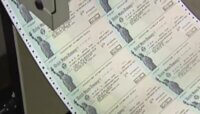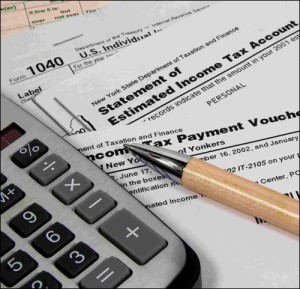If you filed your tax return by April 15, you can exhale, kick back and wait for your refund – if you’re getting one. Here are some answers to many post tax season questions that most taxpayer have.
When will I get my refund? The most secure method of receiving your refund is direct deposit to your bank account – checking or savings. You don’t have to worry about thieves at the mailbox if the funds are transferred to you electronically. It doesn’t cost extra to receive your refund in this manner. If you elected to receive your refund by check and have already filed your taxes, it’s too late to ask the IRS to perform a direct deposit. Just keep this method in mind for next year. Your bank will not tell you when the refund arrives but usually it can take anywhere from one to two weeks depending upon when in the season you electronically filed your tax return. If your return was paper filed, it could take as long as four to six weeks to arrive. Continue to check with the bank.
Why is my tax refund held up? If it has been more than two weeks since you electronically filed your return or more than four weeks if paper-filed, go to the ‘Where’s My Refund’ button on the IRS website home page to discover the progress of your refund. The step-by-step procedure is very easy to follow. You need to know your filing status, your Social Security number and the exact amount of the refund from the tax return. You can expect a hold up or relinquishment in the refund for various reasons: past due student loans, unpaid child support, unpaid state income tax liabilities, claiming injured spouse, or questions about the validity of the Earned Income Tax Credit claimed on your return.
What if I can’t pay? If you filed your return without paying the tax owed, don’t panic. The good thing is that you filed the return. I often hear stories of taxpayers who don’t file because they can’t pay. Big mistake. By not filing, you incur a “failure to file” penalty on top of the failure to pay penalty. And it can get expensive. The failure to file penalty racks up at five percent per month, capping out at 25 percent. That’s $250 on a $1,000 liability. So if you haven’t filed for this reason, file now! And if you have filed but didn’t pay and you think you can pay off the balance within six months then begin making payments as soon as possible. Write “Form 1040 2014” along with your Social Security number on the memo line of the check to ensure that the payment is applied to the 2014 tax year. Better yet, make your payments electronically at EFTPS.gov, the IRS secured website for receiving payments. The IRS will bill you with penalties and interest for not paying the total due by April 15. Just make the payments accordingly. The first six months you will receive correspondence from the IRS requesting payment. Be assured that these are computer generated. A human is not handling your account; no one is going to send out Roscoe and Vinnie to collect. If after six months, you have not paid in full, go to irs.gov and set up an Online Payment Agreement Application. There is an application fee.
I made a mistake on my tax return. Now what? If after filing your taxes, you review your return and encounter an error, know that this doesn’t necessarily flag your return for audit. Every year the IRS mails out correspondence audit pieces that also are not handled by humans. The IRS matches documents filed by banks, your employer and other sources to individual tax returns to ensure that the proper amounts of income and deduction have been reported. For example, your employer provides you with a W2 showing taxable wages of $50,600 but on your tax return you showed only $50,000 – $600 less. The IRS will catch this error – it might take up to a year – and generate a letter called a CP2000 showing the correct amount and billing you for any difference in tax this error generated. You will also owe a bit of interest. You have the option to amend your income tax return to show previously omitted items or to correct other errors. These returns are processed by actual humans so it’s important to provide as much back up documentation as possible to substantiate any additional deductions. It’s usually best to have a professional prepare an amended return for you.
If you filed for an extension, now is the time to get that tax return out of the way. Your tax pro has likely already returned from a well-deserved vacation – refreshed and ready to work. Rather than waiting until September or October or minutes before the final October 15 deadline when your tax pro is stressed again, prepare your taxes now. Extra time is available to ensure that your return is completely and accurately prepared. This is especially important if you think you will owe. If you have a tax liability, it is due on April 15. An extension only grants additional time to file; it does not allow you to go without penalty for taxes owed.
Bonnie Lee is an Enrolled Agent admitted to practice and representing taxpayers in all 50 states at all levels within the IRS. She is the owner of Taxpertise in Sonoma, and the author of “Taxpertise, The Complete Book of Dirty Little Secrets and Hidden Deductions for Small Business that the IRS Doesn’t Want You to Know.”




Be First to Comment